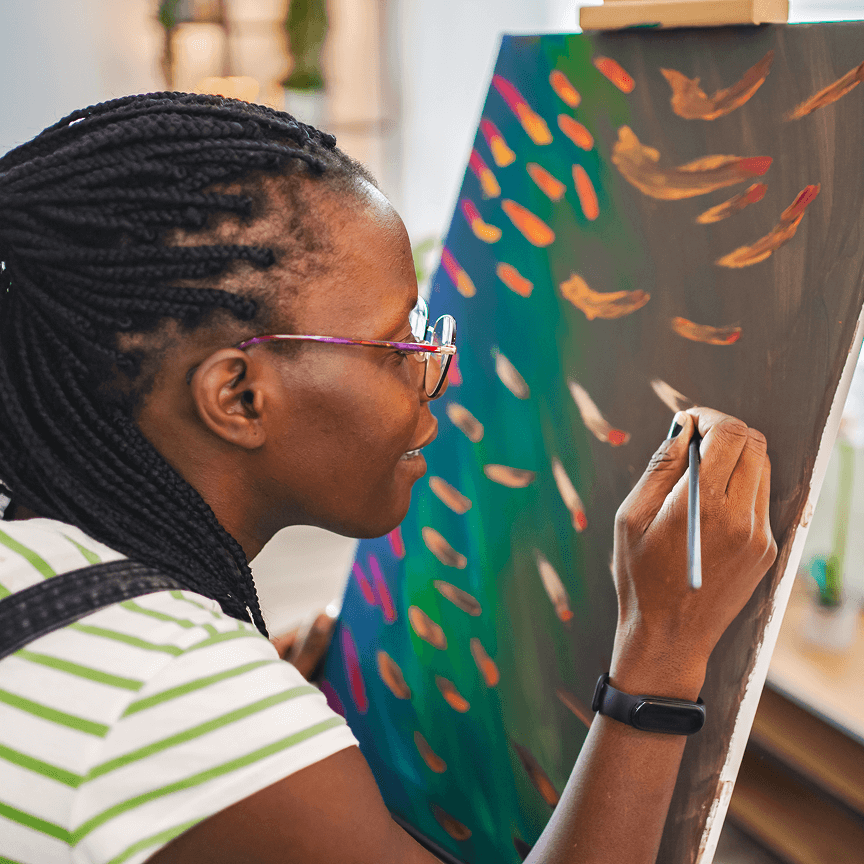In recent years, collectors and curators around the globe have turned their eyes to Africa—not just for its natural resources, but for its treasure trove of rich, authentic, and soul-stirring art. From the legendary Nok terracotta sculptures of Nigeria to the regal Ashanti gold weights of Ghana, African traditional art has become more than just decorative; it’s become deeply desirable.
But for true collectors, investing in African traditional art isn’t just about acquiring something beautiful—it’s about becoming part of a story, preserving culture, and making a meaningful impact.
A Legacy on Display
Take, for instance, the Yoruba bronze works that once adorned the royal courts of ancient Ifẹ and Benin. These artworks, created with intricate lost-wax techniques centuries ago, are still marvels of precision, grace, and spiritual symbolism. Some pieces have fetched millions of dollars at global auctions, but their real value goes far beyond the price tag.
When you collect African traditional art, you’re not just hanging a mask on your wall or placing a sculpture in your gallery—you’re preserving a sacred legacy. You’re honoring the voices of ancestors and sustaining the creativity of communities who have used art to express their identity, beliefs, and dreams.
Art with Authenticity
In a world where mass production often trumps originality, African traditional art stands as a testament to authenticity. Each piece is a story crafted by hand—sometimes passed from master to apprentice over generations. The colors, textures, and symbols are not arbitrary; they are codes of language, heritage, and sometimes spirituality.
Let’s consider the Kuba textiles from the Democratic Republic of Congo. These richly patterned fabrics, made from raffia palm leaves, were traditionally used to celebrate royalty and mark important life events. Today, collectors see them as both artistic and anthropological goldmines.
By choosing to invest in such art, collectors do more than diversify their portfolios—they acquire one-of-a-kind cultural gems that can’t be replicated.
Reclaiming Value and Dignity
Unfortunately, much of African art history is tied to colonial plundering. Many pieces currently in Western museums and private collections were taken without consent. However, a new wave of ethical collecting is emerging—one that focuses on buying directly from the source or through verified platforms like ArtNativ.
This model not only promotes transparency but ensures that the creators—the artists themselves—retain dignity and benefit fairly. This is cultural investment in its purest form: returning power to the creators and allowing them to tell their own stories on their own terms.
The Rising Tide of Global Demand
Institutions like the Smithsonian’s National Museum of African Art and exhibitions at the British Museum have increased global interest in African art. The art market is responding, with the value of African artworks consistently climbing.
For instance, in 2020, a carved wooden mask by the Fang people of Gabon sold at auction for nearly $7.5 million. While this is an extraordinary case, it shows that the world is waking up to the value African traditional art holds.
Even more exciting is the opportunity for early collectors to acquire incredible works at relatively accessible prices—especially when working directly with artists or grassroots platforms.
Cultural Investment, Personal Transformation
Collecting African art is not a passive activity. It transforms the collector. It opens up new ways of seeing the world, encourages cultural empathy, and often invites one into a global conversation about identity, ownership, and heritage.
One collector from the U.S., James R., shared his journey: “I started with a simple carved stool from Ghana. Ten years later, my collection tells stories of resilience, creativity, and spiritual depth that I had never known before. These are not just objects; they are doorways.”
Why ArtNativ Is Different
In a landscape filled with middlemen, forgeries, and exploitative practices, ArtNativ offers a fresh alternative. Built to empower traditional artists—especially those overlooked or underserved—the platform connects collectors directly to creators.
Each piece comes with verifiable background information, artist profiles, and cultural context, allowing you to understand the depth behind your acquisition.
You’re not just buying art—you’re building bridges.
Final Thoughts
If you’ve ever considered expanding your collection, now is the time to explore African traditional art. Whether it’s a wooden sculpture from the Dogon people of Mali or beadwork from the Maasai of Kenya, each piece offers not just beauty but purpose.
This is art that heals, tells stories, preserves identity—and invites you to be part of something timeless.
So next time you admire a carved mask or a woven textile, look beyond the brushstrokes. You might just be holding a piece of Africa’s beating heart.
Interested in starting your journey as a cultural collector? Join ArtNativ’s waitlist today and be the first to explore exclusive works from Africa’s finest traditional artists.

